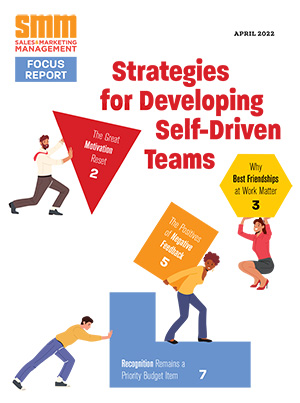From the endless scroll of social media to the rise of AI agents performing complex tasks, and with mobile use now accounting for over 60% of all Web traffic, our virtual world is more dynamic than ever. While people might be changing how they’re exploring the internet, and the devices they’re doing it from, there is one constant: a brand’s domain name is its online platform.
Domain names impact everything from discoverability to trust and credibility and they play a crucial role in brand identity. Alongside the “name” portion of a domain (ideally an exact match of your brand name), domain extension is an increasingly important aspect. The scarcity of strong .com names has led to a shortlist of alternative extensions gaining traction – but brands must choose carefully to stay on-brand, and keep consumers onside.
In our fast-changing online world, brands need to stay alert to what’s new in domain extensions – and what’s holding true after 40 years of the internet.
Why .com is Still King
One of the first seven top-level domains, .com remains the gold standard domain extension even after the introduction of thousands more. .com was initially conceived for commercial websites, and while it remains a key asset for businesses, it has become synonymous with an online identity in general, and represented by over one-third of all websites.
The near ubiquity of .com in commercial settings is its main strength: consumers’ first assumption for a brand website is that brand’s name plus .com, and place implicit trust in brands located at .com extensions.
Research from Atom.com found that investors also ranked .com domains as the #1 extension for funding, explaining its dominance among newly funded startups – 64% of newly funded startups are .com.
.com’s strength stems from its familiarity for consumers: they know and trust it, they expect it, and they associate it with the brands they love to interact with online. Every new business, from a budding fashion brand to revolutionary AI tools, must consider whether the trust that comes from a .com is right for them.
However, its popularity means that strong names at .com extensions are less accessible and affordable. In recent years, this has led to the growth of a suite of alternatives for ambitious brands.
Domain Extension Rising Stars
With over 1,600 top-level domains available in 2025, it might feel like brands have more choice than ever. In fact, only an exclusive list is proving itself among customers, each with its own industry relevance and audience appeal.
Having a Moment: .ai
Now found on 12.1% of all newly funded startups domains, .ai is undoubtedly having its moment fueled by consumer and investor interest in the technology’s revolutionary power. Since the introduction of ChatGPT in late 2022, .ai domain registrations have soared, and there are now over 600,000 .ai domains, a 10x increase since November 2022. Brand interest in this domain has surged, and on Atom.com, revenue from .ai domains has increased 4700% across that period.
Despite .ai’s popularity, and its strong representation in funded startups, brands should be cautious. Attaching your brand to the .ai domain makes a promise to your audience: you’re genuinely and revolutionarily AI-first. If AI is only superficial to your products or services, this domain could harm your brand position as well as trust in your ability to deliver on your promises.
For a Technical Audience: .io
Latest data suggests that .io is now represented in 4.9% of newly funded startup domains, although the tech-oriented bias of startup funding may overemphasize its relevance to most brands. The reference to input/output is understood well by tech and dev-oriented users, with 77% of tech-employed respondents recognizing this domain compared to 40% of consumers overall.
Still, any brand pitching to a tech audience, and some consumer brands with a tech focus, can use .io effectively, such as D2C virtual reality therapy brand oVRcome.io.
For Brands Thinking Outside the Box: .co
While .ai and .io are industry-specific, the scarcity of strong .com domain names created the need for a generalized alternative to .com. We now have .com making up 3.5% of newly funded startups, and used by forward-thinking brands such as dating-app Hinge.co and D2C health tech firm Ro.co.
While recognition of .co is growing, undoubtedly some competitors will land on your .com neighbor. Note that Hinge, which is predominantly app-based, and Ro.co’s super-short rhyming name succeed at .co for unique brand characteristics. If you’re choosing .co for your domain, make sure you can stand out.
Beyond the Main Players
There’s a clear tier system for domain extensions, with .com at the top and a few main players a step below. In 2025, though, several factors, including the rise of social media, app-based provision and dynamic marketing channels, are allowing trailblazing brands to find success at other extensions.
For example, startups such as Lovable.dev ($200M), Pump.fun ($500M), Harmonic.fun ($100M), and Calo.app ($39M) have recently received significant funding rounds.
However, these success stories at alternative extensions are the exception rather than the rule. I’d encourage brands to think carefully about their audience and ambitions before opting for an easily available, but not widely recognized, top-level domain. These brands stand out thanks to big marketing budgets, revolutionary products and carefully crafted brand positioning: all three are likely needed to find success at lesser-seen extensions.
The Virtual Balancing Act
The rise of alternative extensions is driven by the scarcity of top-tier domains: .dev, and .app are far more available, giving your brand more and more affordable options. Meanwhile, while .ai, .io, and .co, will be more available than .com.
Given that exact match domains are increasingly non-negotiable for consumers, brands face a choice: prioritize a longer domain name at a gold-tier .com extension, or match an alternative extension with a shorter, more prestigious name.
There’s no clear answer. Brands must balance their ambitions (do you seek to be a category-defining product like Slack?), their audience (will they recognize and accept alternative extensions) and a multitude of other factors associated with brand positioning to find out.
What’s clear is that domain extension sends a strong signal to your customer base, as well as any investors taking note of your trajectory. Choose wisely.





